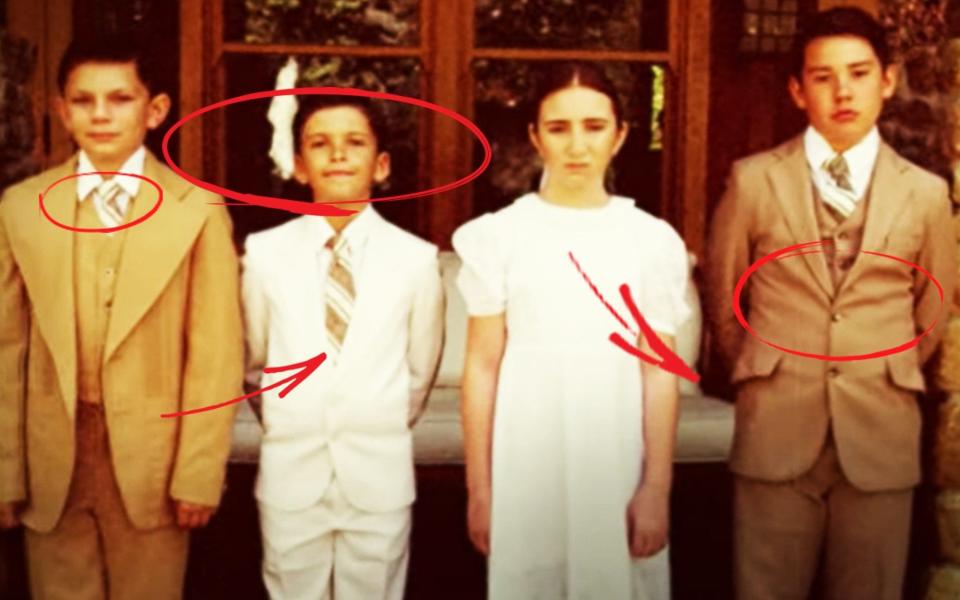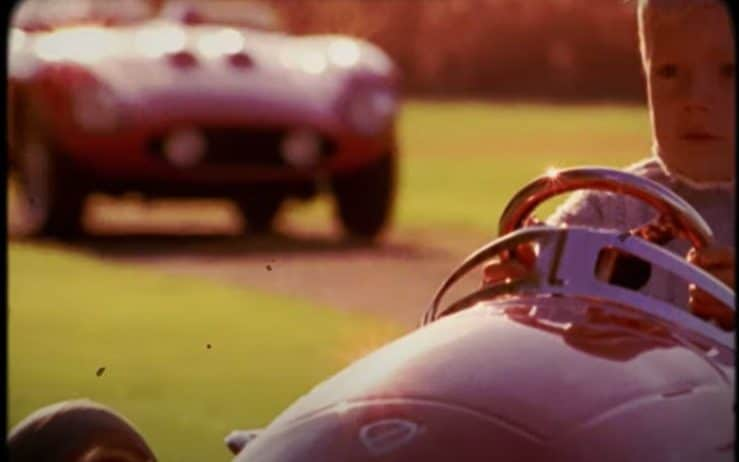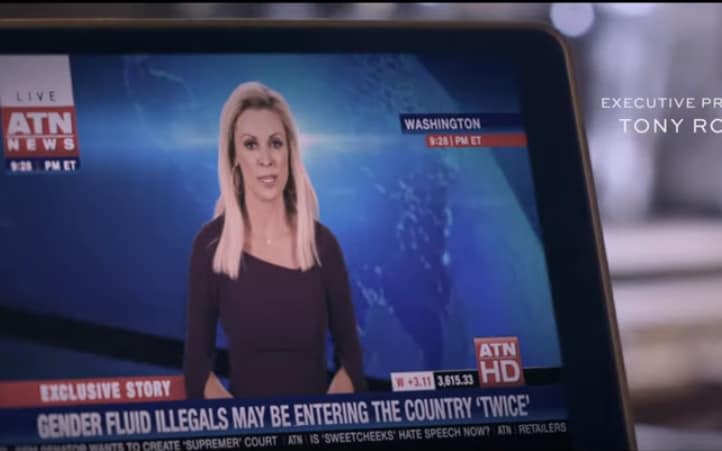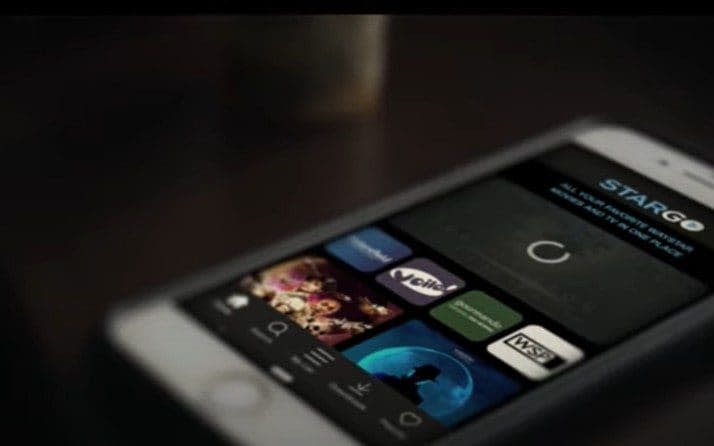Inside the Succession opening credits: new clues, and how they were made

Saying goodbye to Succession will be a wrench at the end of this final showdown, which is a strange feeling to process, given all the poison flying around.
The series had us from the off, though – not just because the first ever episode was pure killer, but thanks to that electrically scored title sequence. Though it’s been lightly tweaked for each subsequent season, constants have remained: the trappings of wealth, the corridors of power, the absurd static of America’s blizzard-like media saturation. And always, the back-stabbing Roy dynasty, then and now.
Before we ever jumped into their world, this intro was an arresting puzzle. About half of it consists of 8mm home-video snippets from some childhood dream of the 1970s – all tennis whites, poolside lounging and sun-kissed garden games, complete with a non-negotiable shot of pampered little ’uns riding an elephant.
Right at the end, the intro jumps from past to present using a match cut on Logan Roy’s back, hopping from a crisp suit jacket in middle age to the hunched shoulders of Brian Cox’s fraying paterfamilias in a cable-knit sweater, facing out into a modern media board room. We get that the children are some versions of the four junior Roys, in some sort of prelapsarian idyll counterpointed harshly with all the pulsing urbanity inserted in shards – a steely, cold, 24-hour-news vision of bright lights and the big city.
The configuration of who’s posing in the mansion doorway, and their relative ages, has been jiggered about over time – arguably to create a closer match with the “real” Roys, but also disorienting us further, because they’re like someone’s faded memories swimming into view while others get redacted.
Matching the main thrust of the plot, there was only one heir apparent when we first began; now we have seem to have four. A kid slaloming down ski-slopes is on a long-range slide towards his doom, perhaps. One new shot has a toddler in a turtleneck riding a red toy car, with daddy’s Porsche, or whatever it is, behind him. We’re well aware by this point that putting Kendall Roy at the wheel of any vehicle is a deadly proposition.
The Emmy-winning score, by Nicholas Britell, arrived like our emcee in shirt and tails, striding up to start proceedings with its instantly catchy aristocratic fanfare. Drama darkly surges under its looping piano curlicues, with more than a touch of Prokofiev’s Dance of the Knights from Romeo and Juliet. There’s no fan of the show who hasn’t found themselves whistling snatches of it in the shower or tapping a foot on the sofa when it strums up.
The sequence was created by Picturemill, an LA-based design and content studio whose film-title work ranges from Dreamgirls to Drag Me to Hell, Phantom Thread, The Big Short and Vice. (Remember the business with all the fish hooks in that?) Their relationship with Adam McKay and Kevin Messick, two of Succession’s executive producers, brought them on board when McKay showed them his rough cut of the pilot episode.

William Lebeda, Picturemill’s Creative Director, and David Midgen, the company’s Senior Creative Producer, picked up the baton.
“We did have a few ideas – bold metaphorical sequences around money and power and picking the bones of the dying,” the pair explain. “At that point the show wasn’t even greenlit for series. We ended up making some simple but sophisticated typography for the pilot and then we all waited for HBO’s decision to move forward.”
“The brief was very open, with just a few themes to start us moving. We developed concepts about poison, corruption, family, wealth, media, and death. Again, they tended to be more allegorical or metaphorical. And though those themes seem a bit grim, all of the ideas had a bit of very dark humor, to keep it all from being too dire or too earnest.”

Succession’s brutal marriage of comedy and drama is exactly what kicks it up to the top of everyone’s must-watch list on a weekly basis, and also identifies it most clearly as the baby of Peep Show and The Thick of It’s Jesse Armstrong, its multiple-Emmy-winning creator and showrunner.
The credits are peppered with his glints of satire: hit pause and look at the headlines, for instance, on ATN News, the Roys’ Fox-style infotainment network. This season, we get “CHINA HACK COULD SEE 40M AMERICANS ENTOMBED IN THEIR ELECTRIC CARS” – one of the show’s trademark parodies of scarifying media rhetoric. The ticker outside Waystar HQ reads: “MANY WITH BIRD FLU CAN’T STOP THINKING OF DUCKS.”
As Lebeda and Midgen read the first half-dozen episodes, the family dynamics of the show focused their ideas about the sequence most. “We took a step back from our more metaphorical approach,” they say, “and started writing new ideas about family, siblings, fathers, with some of the pervasive themes of wealth and media. Images of bloodlines and media empires and lineage and paparazzi and family photos started to come together. We started thinking about montage as story, and that felt like the right tone for the show. To combine all of these ideas, each represented almost as single images.”

At that point, they started playing around with vintage 8mm stock footage – including the flyover shot of that winged mansion we glimpse, which is actually the same one used in the surreal viral short Too Many Cooks from 2014. Using their favourite bits of Britell’s music from the pilot, they started to develop the theme of past versus present, and talking about home movies, rather than photos, as a way to excavate the early years of the Roy family.
Off they went to shoot this key material with a few constraints in mind. “Authenticity was very important, so we chose to capture it mostly on Super 8 film. We chose a small handheld camera, from the early to mid-70s, since we were cutting it along with other vintage 8mm stock from the time or before.
Wardrobe and props, like the tennis racquets, all needed to be curated and period specific, but neutral enough to be not screaming a specific year, or overly campy. “The smallest of gestures” – say, Logan making a chopping motion with his hands at the garden table – “became important clues to the characters.”

“Then we decided to evolve the sequence forward in time,” say the Picturemill duo, who got hold of a vintage VHS camcorder to do this – “the kind where the tape went into the camera and the whole thing was all-in-one. Thank you eBay! We bought 2, just in case we had a failure on the day.
“Again we leaned into a sensibility that was not campy or trendy, but more realistic to what people truly wore in the mid-80s, rather than what was featured on TV or in commercials. We actually recorded enough material to completely rebuild an entire new sequence using only the VHS material, but everyone felt like crosscutting from the 70s to the 80s to the 2000s was a more layered and nuanced approach.

One visual influence, above all, hovers over the look and feel of these vintage reminiscences. It’s the opening of David Fincher’s The Game (1997), an 8mm garden-party fiesta flashing back to a lavish childhood birthday party for Michael Douglas’s character, Nicholas Van Orton.
Achieved with a scratchy virtuosity that helps make the film – at least for this viewer – peak Fincher, it’s a doozy of an intro, with a sinister charge lent by Howard Shore’s sad piano theme and the sound of film crackling and snapping through a projector. There’s something indefinably creepy, even, about the artlessness of all these extras’ faces, managing to seem trapped on film in the pre-mobile-phone era and not quite knowing where to look.
There’s hardly any doubt that Succession is a homage, especially when you consider that the whole finale of the first episode is given over to what the Roy family winkingly call “the game” – a tradition where they leap into helicopters to be taken to a private baseball diamond on the city’s outskirts. Several motifs from Fincher’s Van Orton idyll were replicated with an eerie exactitude in the season one credits – the dad peering through upstairs curtains, or disappearing across a lawn, or placing one awkward hand on the boy who will grow up to be the adult Nicholas (or Kendall Roy).
There’s even a climactic match-cut – not following the dad in Fincher’s film, who we find out jumped from a rooftop on his 48th birthday, but following Nicholas, from his smiling puppy-face to a very unsmiling Douglas, splashing himself awake in the cold blue light of a bathroom mirror.
What’s clever is how The Game’s themes of wealth, unhappiness and emotional isolation have insinuated themselves into the mood-board of Succession, with just these well-chosen visual prompts. I’m guessing Jesse Armstrong must find The Game just as fascinating as I do, and has cued up a series about the privilege bubble of the 0.01 per cent that explores, just as The Game does, the pressures of inheritance and a twisted legacy passed from a father to a son.
Albeit with two other sons, and an icily self-possessed daughter, and the world’s most toady-ish son-in-law, and Cousin Greg, and every other element Succession folds in to render the downward spiral of the Roy family into ever-more-unmissable viewing.

 Yahoo Movies
Yahoo Movies 